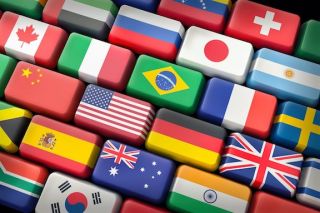KEY POINTS-
- Meta's SeamlessM4T is a universal language translator, which improves global communication.
- This new tech, combined with emerging LLMs, offers vast interpretative capabilities.
- This breakthrough offers a vision for a more connected world while preserving cultural diversity.

In the annals of human history, language has been both a unifying force and a barrier. It has brought people together, fostering shared cultures and communities, but has also been a wall dividing us across regions and even neighborhoods.
The biblical story of the Tower of Babel symbolizes this paradox, as the diversity of languages led to confusion and separation. Today, we stand at the cusp of a new era, with technology poised to tear down these walls and create a new Babel—a global village where communication is seamless and universal.
Meta's Seamless Voice Translation: A New Dawn
Meta's recent research demo, supporting the translation of nearly 100 input languages and 35 output languages, is a step toward this new dawn. Voice-to-voice translation, once a figment of science fiction, is now a tangible reality. This technology transcends mere words, bridging cultural nuances and fostering a deeper understanding. It's worth a try; or es ist einen Versuch wert; or vale la pena intentarlo.
SeamlessM4T, as presented in Meta post, is a universal language translator that represents a fascinating step forward in global communication. Unlike previous systems that were limited in language coverage and required separate subsystems, SeamlessM4T unifies the process, making it more efficient and accessible. It's particularly notable for improving translations in languages with smaller digital footprints while maintaining performance in widely-spoken languages like English, Spanish, and German.
In a commitment to open science, Meta is publicly releasing this technology, along with a vast dataset and tools to encourage further innovation. This initiative is more than a technological advancement; it's a vision for a world in which language barriers are overcome, fostering greater connectivity and understanding.
Large Language Models: Beyond Language Translation
The advent of Large Language Models (LLMs) like GPT-4 takes this transformation a step further. LLMs are not confined to translating languages; they can translate ideas, concepts, and even code.
-
Translating Code: LLMs can translate programming languages, making software development more accessible and collaborative. A Python developer in San Francisco can seamlessly collaborate with a Java developer in Bangalore, transcending the barriers of coding languages.
-
Translating Complex Concepts: Whether it's translating a complex scientific theory into layman's terms or interpreting legal jargon, LLMs can bridge the gap between experts and the general populace. This democratizes knowledge, making it accessible to all.
-
Cultural Translation: Beyond mere words, LLMs can translate cultural contexts, understanding the subtleties and nuances that often lead to misunderstandings. This fosters empathy and global citizenship.
Together, the advances of SeamlessM4T combined with the emerging utility of LLMs like ChatGPT offer a mirror to complexity and ambiguity that reflects common sense interpretations.
Technological and Philosophical Considerations
This technological revolution also has philosophical implications. It challenges the very nature of understanding and interpretation. Are we moving towards a universal language of humanity, where ideas flow without barriers? Or are we creating a new form of Babel, where technology mediates our understanding of each other?
The answer may lie in a delicate balance. While technology can tear down the walls of miscommunication, it must also preserve the richness and diversity of human languages and cultures. The challenge is to create a global conversation without homogenizing the beautiful tapestry of human expression.
The walls of no communication and miscommunication are indeed tumbling down. Meta's voice translation and the emergence of LLMs are heralding a new era of connectivity. As we embrace this future, we must also reflect on what it means to communicate, to understand, and to be human in a world where technology is redefining the boundaries of language.
In the words of the poet Rumi, "The language of friendship is not words but meanings." As we move towards a world where technology translates not just words but meanings, we are taking a significant step towards a more connected, empathetic, and understanding global community.


